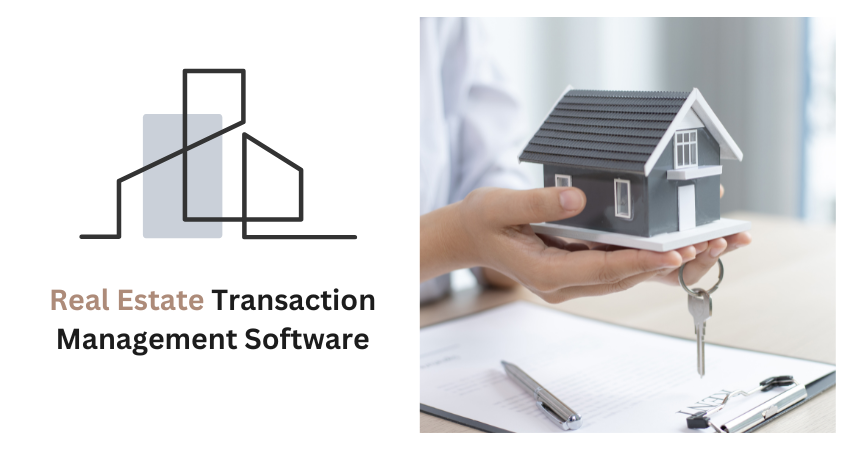C-Level Insights: Transforming Real Estate Transactions through Innovative Software

The real estate industry is ripe for technological disruption. With its intricate web of legal documents, complex financial transactions, and numerous stakeholders, streamlining processes through robust software solutions is desirable and essential for survival. This blog post delves into the key considerations for C-level executives seeking to develop effective real estate transaction management software, offering insights into the development process, critical features, and the competitive landscape.
The Importance of Real Estate Transaction Management Software
Real estate transaction management software is a centralized platform that automates workflows, manages documentation, and enhances stakeholder communication. The benefits of implementing such software include:
-
Increased Efficiency: Automating repetitive tasks reduces the time spent on manual processes.
-
Improved Accuracy: Centralized data minimizes errors associated with document handling and compliance.
-
Enhanced Collaboration: Stakeholders can easily share information and updates in real time.
-
Regulatory Compliance: Built-in compliance tools help ensure adherence to legal requirements.
As a top software development company in UAE focused on real estate solutions, understanding these benefits is crucial for creating a product that meets market demands.
Key Features of Real Estate Transaction Management Software
When developing real estate transaction management software, certain features are essential to address the unique challenges of the industry:
-
Document Management: A robust system for storing and organizing transaction-related documents.
-
Workflow Automation: Tools that automate repetitive tasks, such as sending reminders or generating reports.
-
CRM Integration: Integration with customer relationship management systems to track client interactions and history.
-
E-signature Capabilities: Allowing users to sign documents electronically for faster processing.
-
Compliance Tracking: Features that monitor compliance with local regulations and industry standards.
-
Reporting and Analytics: Tools that provide insights into transaction performance and operational efficiency.
The Development Process for Real Estate Transaction Management Software
The development process for transaction management software involves several key stages:
1. Requirement Gathering and Analysis
This initial phase focuses on understanding the specific needs of stakeholders. It involves:
-
Identifying core features required by users.
-
Mapping out workflows to automate processes.
-
Conducting interviews with potential users to gather insights.
The estimated cost for this phase can range from $2,000 to $15,000 depending on complexity.
2. Design and Prototyping
Creating wireframes and mockups allows developers to visualize the user interface (UI) and user experience (UX). This stage includes:
-
Designing intuitive navigation paths.
-
Ensuring that the UI aligns with user expectations.
Costs for this phase typically range from $10,000 to $50,000 based on the number of screens and detail level required.
3. Development and Integration
This is where the actual coding takes place. Key activities include:
-
Developing both backend and frontend components.
-
Integrating third-party systems such as MLS (Multiple Listing Service) or payment gateways.
-
Implementing workflow automation tools.
Development costs can vary widely from $15,000 to $150,000 depending on feature complexity.
4. Testing and Quality Assurance
Quality assurance ensures that the software functions as intended. This stage involves:
-
Conducting functional testing to verify all features work correctly.
-
Performing security testing to protect sensitive data.
-
Simulating real-world scenarios to ensure reliability under various conditions.
Testing costs can range from $5,000 to $25,000 based on the number of use cases covered.
5. Deployment and Maintenance
Once testing is complete, the software is deployed in a live environment. Ongoing maintenance is crucial for:
-
Addressing any bugs or issues that arise post-launch.
-
Updating the software to incorporate new features or comply with changing regulations.
Best Practices for Developing Real Estate Transaction Management Software
To ensure successful development, consider these best practices:
-
Involve Stakeholders Early: Engage potential users throughout the development process to gather feedback and refine features.
-
Focus on User Experience: Prioritize intuitive design elements that simplify navigation and enhance usability.
-
Adopt Agile Methodologies: Implement agile practices to allow for flexibility in development and quick iterations based on feedback.
-
Ensure Scalability: Design software architecture that can accommodate future growth in users and features without significant rework.
-
Invest in Security: Implement robust security measures to protect sensitive client data from breaches.
Conclusion
Developing effective real estate transaction management software requires a deep understanding of industry needs combined with a structured development approach. By focusing on essential features, engaging stakeholders throughout the process, and adhering to best practices in software development, companies can create solutions that not only enhance operational efficiency but also foster trust among clients.
As a leading software development company in Dubai, we specialize in delivering tailored solutions that meet the unique demands of the real estate sector. Our team of skilled software developers is equipped to guide you through each step of the development process, ensuring your project achieves its objectives efficiently.
Incorporating advanced technologies such as AI can further enhance your software's capabilities, making it a valuable asset in today's competitive landscape. Whether you are looking to streamline operations or improve client interactions, investing in effective transaction management software is a strategic move towards achieving long-term success in real estate.
- Industry
- Art
- Causes
- Crafts
- Dance
- Drinks
- Film
- Fitness
- Food
- Games
- Gardening
- Health
- Home
- Literature
- Music
- Networking
- Other
- Party
- Religion
- Shopping
- Sports
- Theater
- Wellness
- News


